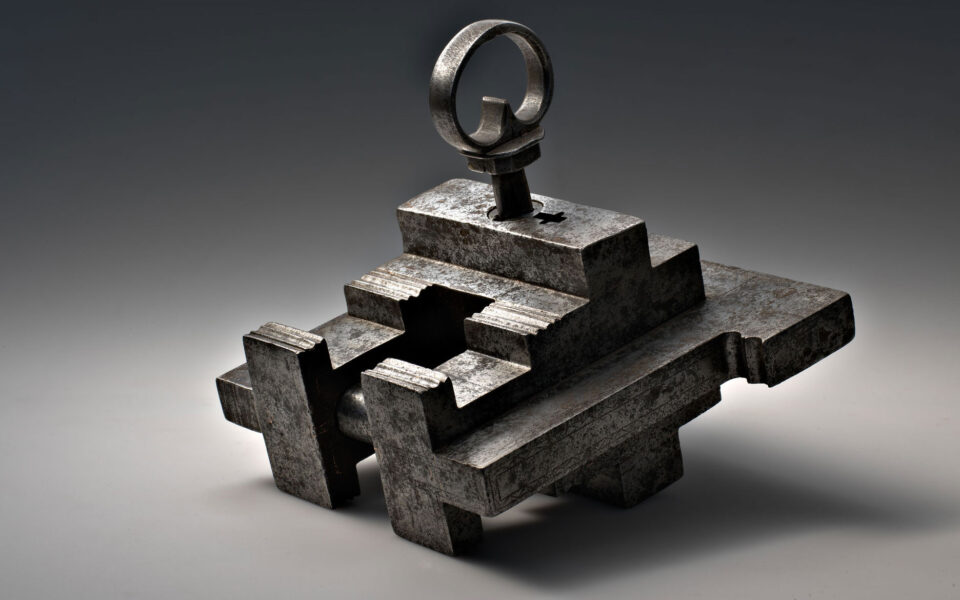
LOCKS – A Collection of Masterpieces
The book LOCKS-SERRATURE, released in 2007, saw Alessandro and Fiorenzo Cesati create the first in a series of publications to illustrate in depth their founding passion for iron: an authentic ‘magnetic’ attraction for this metal, whose various crafted forms are able to stir ever new and different emotions.
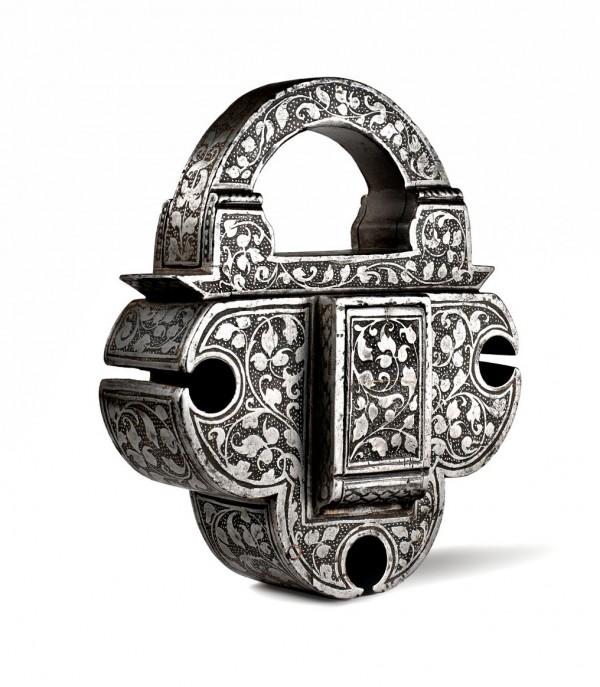
Combining the historical and scientific approach with a contemporary description which aim to celebrate the artifacts qualities, they have essentially wanted to focus on the visual elegance of these objects with this publication, which is so spectacular as to propel them beyond the dimension of space and time.
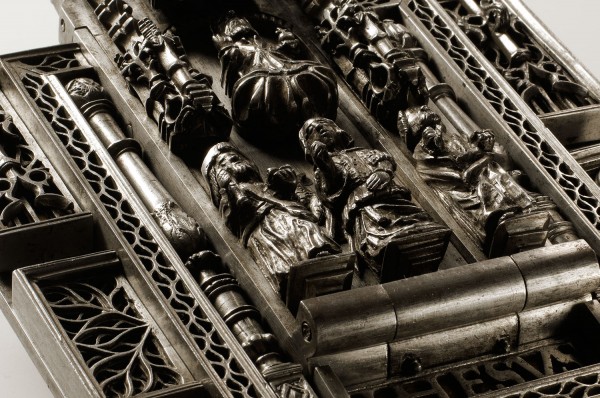
“The artefacts made from this material have nothing to do with nature but they rival it in terms of beauty, ingenuity and solidity.
No activity better symbolises man’s triumph over the world. Mastering iron requires above all the use of strength, together with consummate experience, a sure eye, a steady hand, a trust that defies hesitation, in short sureness of execution.
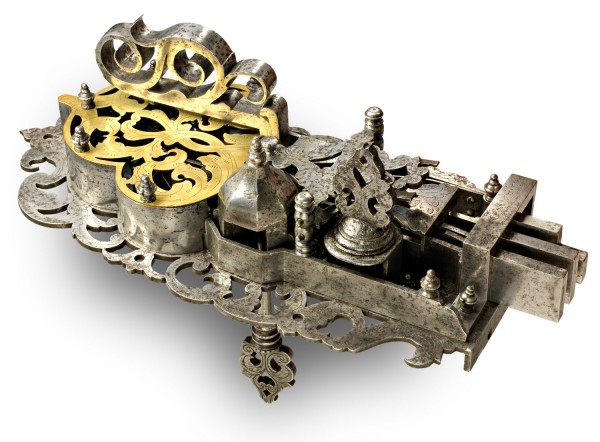
And it is therefore not surprising that, thanks to these qualities, the art of the forge has aroused the interest of princes. In France, Louis XVI’s infatuation with smithing is famous. He had a smithy and a lock-making workshop set up at Versailles, in the small apartments surrounding the Court of the Stags. In 1781, to celebrate the birth of the Dauphin, the locksmiths of Paris presented the King with ‘a lock which was so ingenious that when it was opened, out would come a child’.
For their part the locksmiths of Paris, who were organised into a powerful guild that was active from at least 1393 on, succeeded, at the end of the Fronde, on 12 October 1650, in having their art recognised as the fourth liberal art, along with Painting, Sculpture and Music.
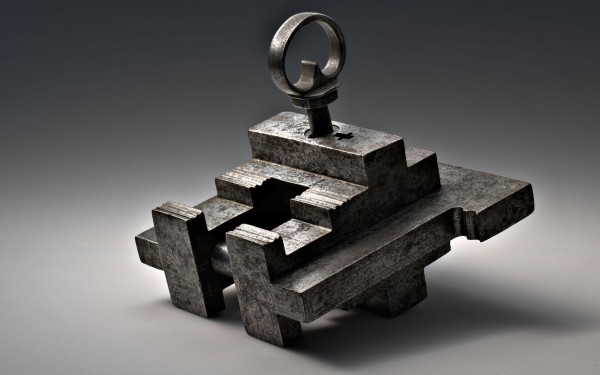
Since smelting and forging are considered models of the greatest human activities, the craft of the locksmith – which is derived from ironworking – would appear to be one of the most complete. Locks are in reality basic commodities because they have a protective function. They are used to secure all sorts of items: city gates, homes, cupboards, wardrobes, chests, strong boxes, jewel caskets, portfolios and satchels. From the end of the Middle Ages onwards, they proved to be artistically ornate as well as useful.
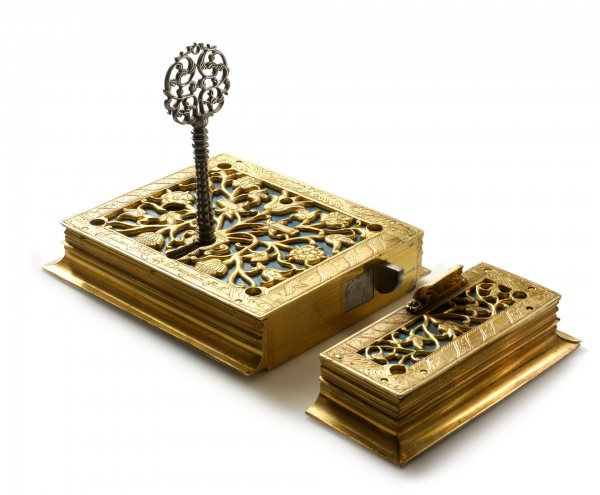
In addition they often guarded some rather intriguing secrets. Did not queen Isabelle of Bavaria order the locksmith Berthelot of Louvain to install on the chambers of her maids-in-waiting in 1418 two locks operated by five different keys? Guillemin Sanguin, the prefect of Parisian merchants between 1430 and 1432, lived in a palais in rue de la Bourdonnais “where there were as many locks as there are days in the year”.
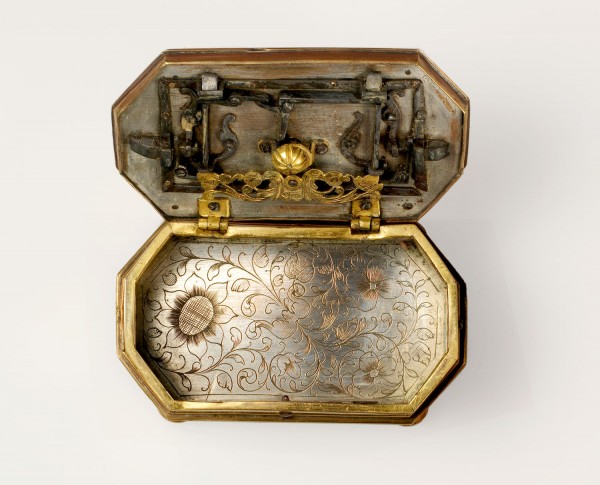
Later Francis I and Henri II had more lock mechanisms constructed first at Fontainebleau thanks to the work of Antoine Moriseau, and then at Anet and Chenonceaux thanks to that of Antoine Rousseau. The latter installed “three big double throw sliding bolt locks” on the gate of Diana of Poitiers, and had to change the mechanisms of all the locks of the Castle so that each had its own key but the one in the King’s possession “opened them all” (passe par toutes)’.
At the same time the King of England would have his personal locks installed every evening on the doors of the apartments occupied by him.
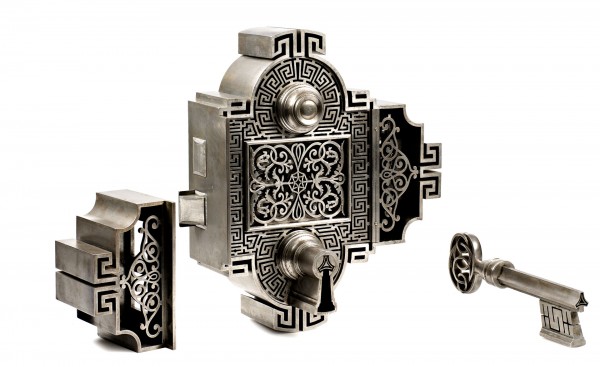
The locksmith is then at the same time a mechanical and a goldsmith. Could he not make his own the words of Jean Lamour, the maker of the grilles in Stanislas Square in Nancy, when he says: “Locksmithing decorates the useful. It has aspects that are full of grace, delicacy, and majesty. It can take on all forms. It has, when it wants, the energy of painting and sculpture, the boldness of architecture and solidity always. Everything that is made by his hands becomes a monument”.
Abstract of the prolusion at the volume by Marie Pessiot, Curator of the Musée Le Secq des Tournelles in Rouen.
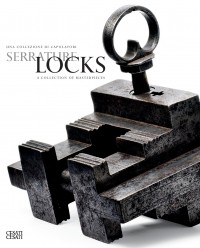
LOCKS – A Collection of Masterpieces
Cesati&Cesati, Milan 2007
Limited edition of 1000 copies
Cm 25 x 31 – 96 four colors pages – hard cover with dust jacket
Bilingual edition Italian/English
ISBN 978-88-902762-0-0
Essay by Marie Pessiot, Curator of the Musée Le Secq des Tournelles in Rouen
Art direction FG Confalonieri
Photographs by Roberto Bigano
€ 100 (shipping charges excluded) Order this book >
© 2013 – 2023 cesatiecesati.com | Please do not reproduce without our expressed written consent
Alessandro Cesati, Via San Giovanni sul Muro, 3 – 20121 Milano – P.IVA: IT06833070151